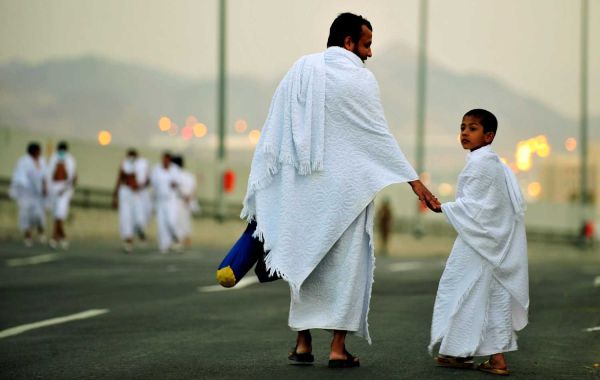For Muslims undertaking the sacred journeys of Hajj and Umrah, donning the ihram marks the beginning of a profound spiritual transformation. It's not just a change of clothes; it's a symbolic shedding of the worldly and a commitment to complete devotion to God (Allah). Let's delve into the rituals and significance of this practice within the context of the pilgrimage experience.
Entering a Sacred State:
The Significance of the Act: Donning the ihram signifies the pilgrim's entry into a state of ihram, a special state of ritual purity and heightened spiritual awareness. This marks the official commencement of the pilgrimage, setting the stage for a period of intense devotion and introspection.
Stripping Away Worldly Distractions: The simple, unstitched white garments of ihram symbolize a stripping away of worldly distinctions. Pilgrims shed their regular clothing and social identities, becoming unified in their shared purpose and commitment to God. This act fosters a sense of humility and equality, reminding them that true worth lies not in material possessions or social status, but in their devotion to Allah.
The Ritual of Donning Ihram:
Preparation and Purification: Before putting on the ihram, pilgrims perform a full wudu, a ritual cleansing involving washing specific parts of the body. This act emphasizes the importance of both physical and spiritual purity for embarking on the sacred journey.
Specific Prayers and Declarations: Pilgrims recite specific prayers and make a declaration of their intention (niyyah) to undertake the pilgrimage. These rituals mark the beginning of their commitment and dedication to fulfilling the pilgrimage rites with sincerity and devotion.
The Symbolism of the Garments:
Simplicity and Humility: The white color of the ihram symbolizes purity and cleanliness. The unstitched design ensures ease of movement during the pilgrimage rituals and represents the pilgrims' detachment from worldly concerns.
Equality in the Eyes of God: By wearing the same simple garments, regardless of their background, ethnicity, or social status, pilgrims embody the Islamic principle of equality. This reinforces the belief that all individuals stand equal before God, united in their devotion and shared humanity.
Beyond the Ritual: The Journey Within:
A Time for Introspection and Reflection: The restrictions associated with ihram, such as abstaining from certain activities and maintaining a respectful demeanor, encourage pilgrims to focus inwardly. This period becomes an opportunity for self-reflection, repentance, and seeking forgiveness for past transgressions.
Strengthening Faith and Connection with God: The entire process of donning the ihram serves as a powerful reminder of the pilgrim's ultimate purpose and commitment to God. By adhering to the rituals and limitations, individuals strive to strengthen their faith, deepen their connection with the divine, and seek personal growth and spiritual renewal.
Conclusion:
The ritual of donning the ihram is much more than just putting on clothes; it represents the symbolic and spiritual initiation of the pilgrimage journey. It signifies a transformation, a commitment to devotion, and a yearning for spiritual growth. As pilgrims shed their worldly identities and enter a state of ihram, they embark on a profound journey of self-discovery and connection with the divine, aiming to return from their pilgrimage transformed and renewed.
source:ملابس احرام








